Learn how to inject environmental responsibility into a highly water-intensive value chain through real case-study of mud resist printing and natural dyeing cluster in Kaladera village, Rajasthan.
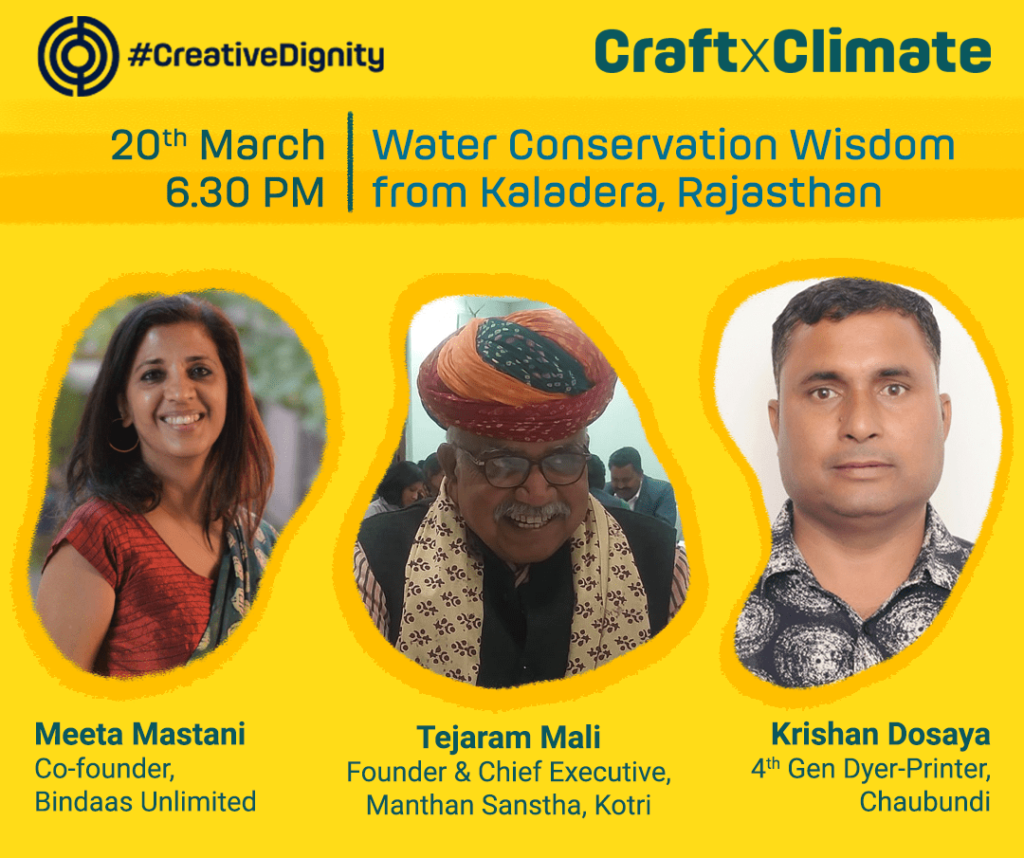

Context
According to the United Nations Industrial Development Organisation (UNIDO), water stewardship involves the socially equitable, environmentally sustainable, and economically beneficial use of water. In 2021, a collaborative project transpired in Kaladera, Rajasthan initiated by Bindaas Unlimited, a social enterprise that makes contemporary textile prints in natural colours with rural artisans in Rajasthan, Gujarat and U.P. since 1993.
Kaladera as a cluster is proficient in mud resist printing and natural dyeing. It is 42 kms from Jaipur in Chomu Tehsil. This is particularly crucial in an area where water tables have suffered due to historical groundwater exploitation by a Coca-Cola plant a decade ago.
The discussion spotlighted key elements of water stewardship, including site and catchment-based actions, and understanding water use and governance. The featured initiative contributes to Sustainable Development Goal 6 (Clean Water and Sanitation), Goal 12 (Sustainable Production and Consumption), and Goal 17 (Partnership for the Goals).
Key Takeaways
Need assessment for water recharge
The speakers who are active stakeholders in the textile value chain of Kaladera shared that they are one of the largest producers of natural dyeing and hand block printing textiles in India in terms of quantity. Cognisant of the fact that pre-preparation of cloth for dyeing and printing is a highly water intensive process and an average washing facility consumes 10 to 15 thousand litres of water daily for pre-preparation of textiles, Meeta was eager for last decade to create a low-impact production model. This is coupled with the fact that water table in this region in the last three decades has gone down from 50 meters to almost 750 meters.
Collaborative action
As a producer working with artisan communities in Kaladera, Meeta Mastani, the founder of Bindass Unlimited took a pro-active step by joining hands with the BBCP Rainwater Foundation, Manthan Kotri, Chaubundi Studio and the artisan community to set up Rainwater Harvesting Tank and Water Recharge Well on community land (60 family units as beneficiaries) and private studio land of Chaubundi family in Kaladera. The financial investment was also shared by these stakeholders.
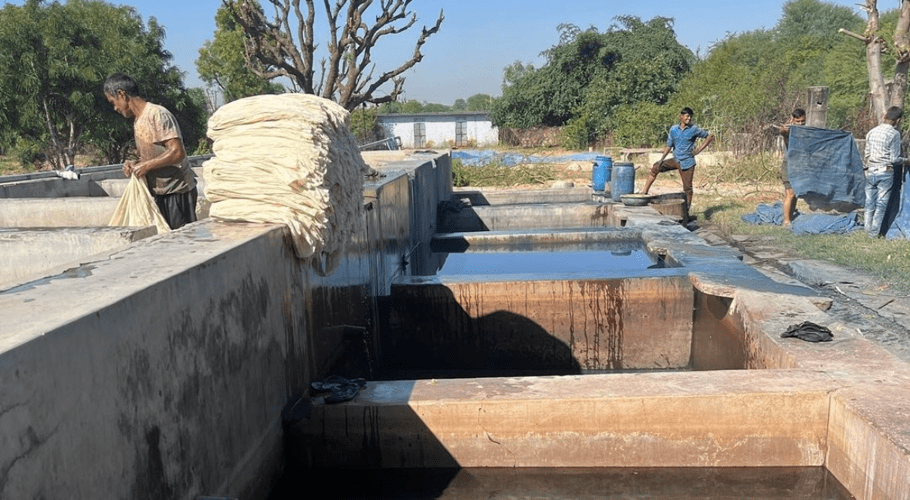

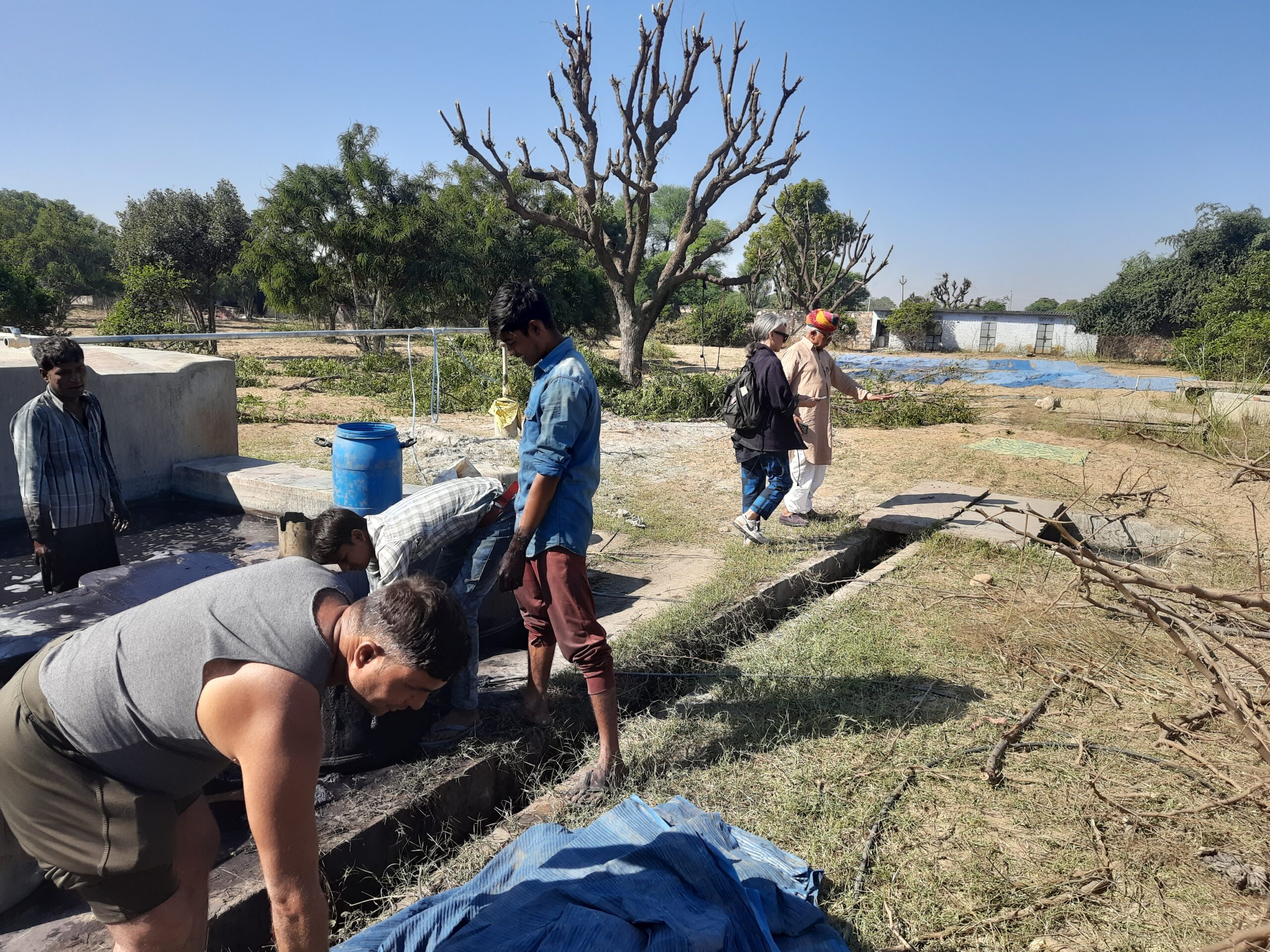

The project was divided into developing 2 systems
Recharge well:
The recharge well dug in the ground receives all water from the wash tanks connected through pipes after a simple 2-point filtration to eliminate mud from mud-dyeing process plus washing natural dyed fabric. On an average, a total of 7.3M L of water every year is re-used and saved.
Rainwater harvesting:
Pipe connected with tin rooftop direct and stores 100,000 litres of water in a storage tank which can be used for multiple purposes including drinking, washing, dyeing, farming, gardening etc. Re-directs 800,000 Liters x year to the ground, otherwise lost in runoff along the surface. Overflow from this tank is directed to the recharge well.
Steps for setting-up the tank tank (for more details, refer recording):
1. Identifying the adequate space for water recharge and rain water tank installation on site
2. Identifying catchment areas for rain water collection eg. tin-shed roof, direction and angle of land slope, average precipitation level study
3. Sensitising the community and other stakeholders about the need and solution for their engagement and governance
4. Calculating tank sizes based on water that needs to be stored and how the overflowing water can recharge ground water
5. In Kaladera’s case,15-foot hole was dug in the earth, with cemented sides and non-cemented bottom that stores and recharges water
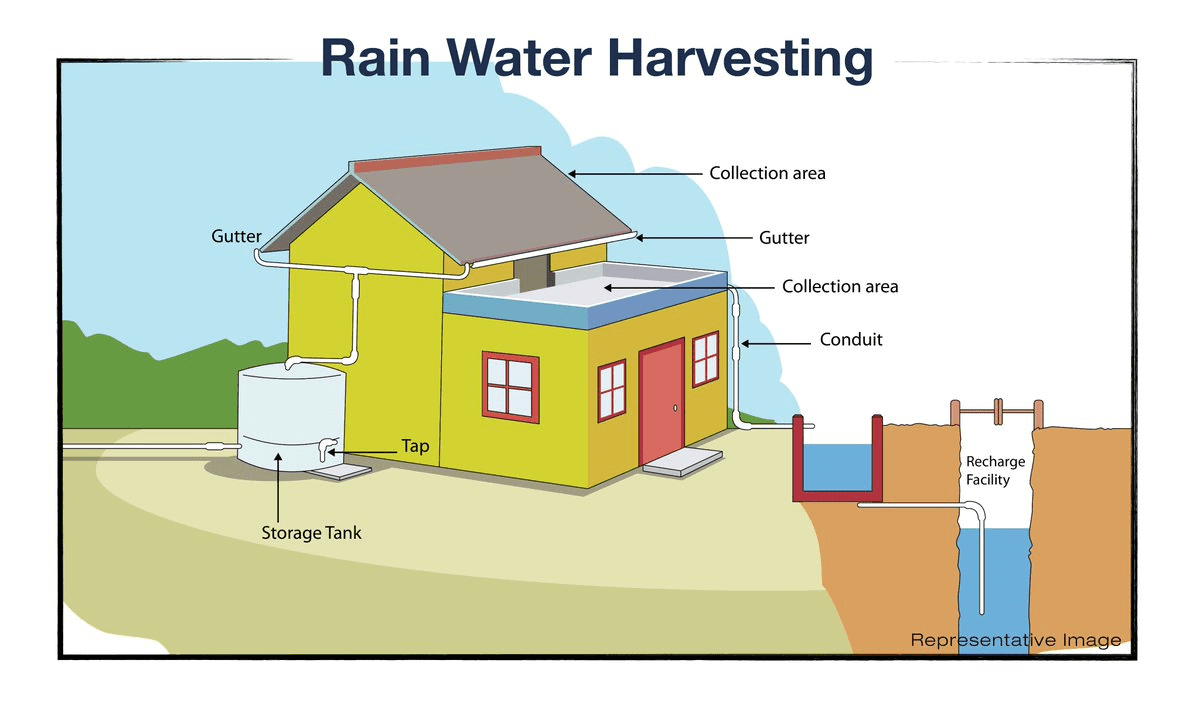

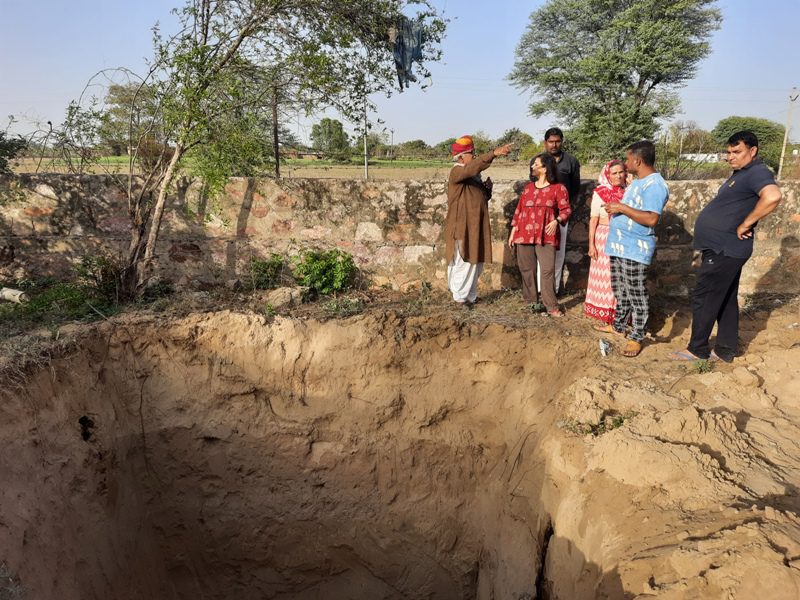

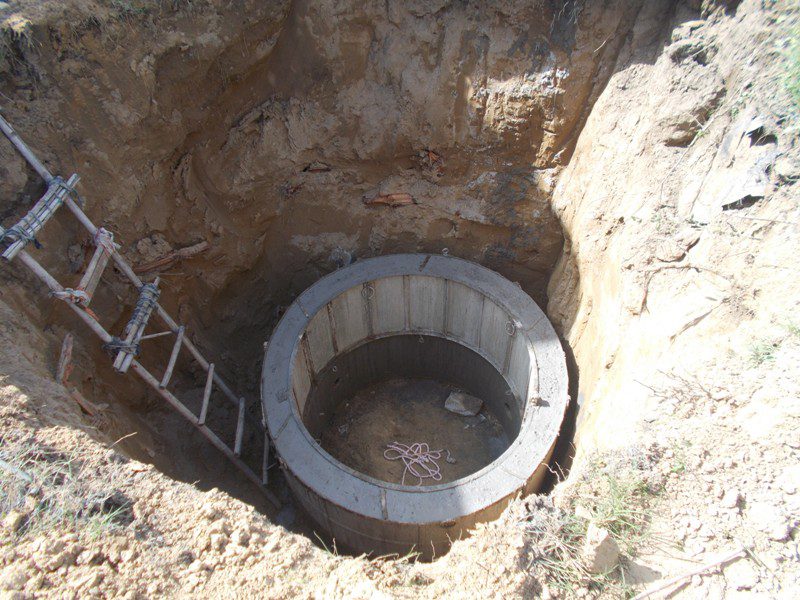

Cost and maintenance
Financial liabilities include both construction and maintenance costs with cleaning. This solution is applicable in processes like mud-resist and natural dyeing. For synthetic dye discharge, this solution would need a different water treatment filter, used in systems like ETP and ZLD.
Tank construction: INR 5-6/litre. 1Lac litre should cost INR 5-6 Lacs
Water recharge well: 2.5L/well (constructed 3 years ago). Manthan Kotri can be contacted for updated cost. Details at end of the document.
Recharge Well: Channel needs to be cleaned regularly for mud removal for 25-30 years of lifetime. A minimum of 2 people can easily clean a tank. The extracted mud can be re-used.
Lifetime of the facility
Storage tank: 50-60 years
Manthan Kotri suggests including social cost for regular community sensitisation and mobilization activities in the water conservation project for operational success.
Limitations of community-model due to limited participation
The conversation revealed that while the individual water recharge and rainwater system were functional due to supervision of Bindaas Unlimited and Chaubundi Studio, the community facilities are non-operational with limited participation by the artisan community members of Kaladera to adopt cleaning activities of the tank.
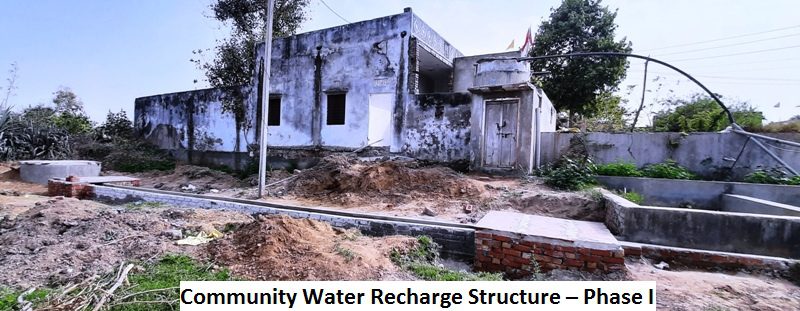

The artisan communities in Kaladera have shown lack of ownership and interest despite Meeta and Krishnakumar’s continual efforts to mobilize their actions towards minimal maintenance of infrastructure. This is combined with lack of acknowledge of water related scarcity and need of conservation for present and future generation. Despite the substantial future benefits, ecological concerns often take a backseat to the immediate focus on economic sustenance in the routine of daily life. Meeta shared that simple maintenance and repair tasks in village take 5x time when compared to city.
Various suggestions were explored to enhance operational efficiency among the artisan community of the public infrastructure set-up in Kaladera. These include suggestions by the participating audience. These included implementing a rotation system for cleaning responsibilities, monetizing cleaning activities through community-appointed personnel, leveraging religious and spiritual narratives to promote water conservation, and showcasing the positive impact of water recharge and harvesting systems on private land through community-led programs.
Contact details
Tejaram Mali of Manthan Sansthan Kotri can be contacted at manthankotri98@gmail.com
Meeta Mastani of Bindaas Unlimited can be reached at mastaninazar@gmail.com
CraftxClimate
Creative Dignity’s “CraftxClimate” initiative aims to position the crafts sector at the forefront of UN SDG 12 ‘Responsible Production and Consumption’ through issue identification, knowledge sharing, capacity building, and advocating sustainable solutions. Join us as we explore climate-resilient growth paths for handmade businesses together! Our exciting lineup of conversations and masterclasses with industry experts focuses on crafting a sustainable future.